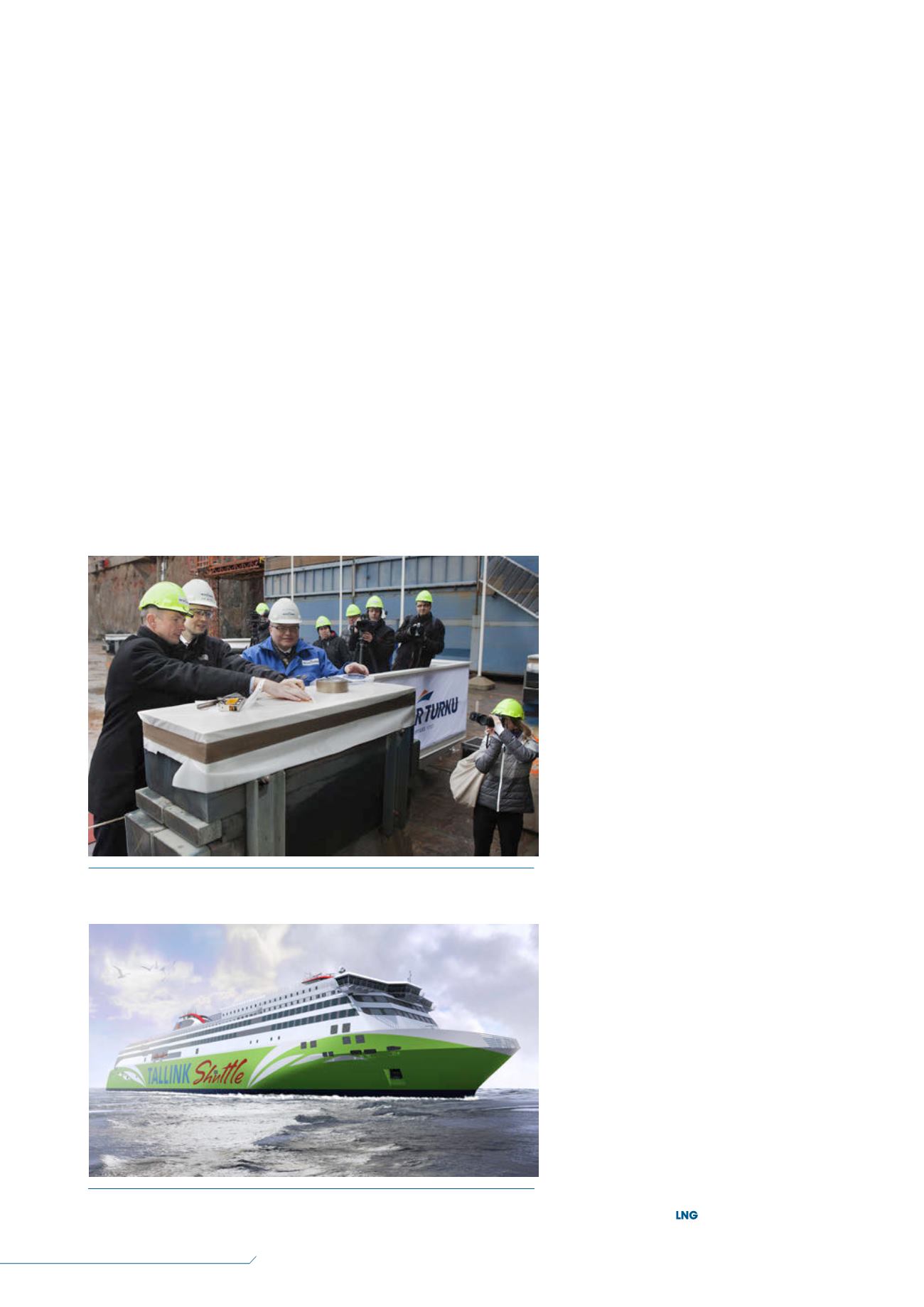
68
LNG
INDUSTRY
JULY
2016
The distributed control system is a complete ship
automation package that integrates all necessary equipment
and systems for control, alarm, monitoring and information
needs throughout the vessel. The solution includes redundancy
for all major components to provide excellent reliability and
availability.
The system also provides crewmembers with tools to
analyse the historical performance of the integrated systems.
Intelligent control
The system delivered to
Megastar
is designed with six operator
stations and nine accommodation alarm panels. There are two
redundant process control stations included in the machinery
system and one in the ESD system. The total system is
distributed to 19 processor and I/O cabinets handling 2000
hardwired I/O signals and 1500 serial communication line I/O
signals. All are designed according to Safe Return to Port (SRtP)
rules and regulations.
The automation will control and monitor the following
systems:
Five diesel engines.
The electric power plant.
Propulsion auxiliaries.
Seawater and freshwater cooling.
Fuel supply and transfer.
Bilge.
Ballast.
Black and grey water.
Boiler plant.
LNG systemmonitoring.
Car deck ventilation.
Food refrigeration system.
A separate system handles the ESD functions for the LNG
plant.
Complete design and delivery
Every step of the project, starting from detailed design,
programming and testing, to onboard commissioning and
completed sea trials, will be handled by the company’s
engineering team.
Valmet delivered its complete control solution in
April 2016. All construction work is scheduled to be completed
in early 2017.
At the time of writing, Tallink was working on the complex
SRtP requirements, which adds a huge amount
of data into the ship’s system that is not needed
on a daily basis, but is important in critical
situations. Therefore, Tallink requires the SRtP
information to be available constantly so that the
engineers can respond correctly if an incident
occurs.
Sea of benefits
Tallink will benefit from the solution in
numerous ways. First and foremost, it will help
in minimising operational costs and maximising
the system and vessel performance throughout
the entire lifecycle of the LNG-powered fast
ferry. Redundancy, high availability and safety
are other crucial aspects that the automation
solution can offer to its users. This is especially
important when it comes to passenger
transportation.
Officers will be able to enjoy a complete
overview of operations onboard thanks to the
state-of-the-art user interface that provides
access to all integrated systems and information
management features. In case of a machinery
problem or incident, crew members can access
help information and use versatile trending,
replay and analysing tools from the user
interface.
The system will help Tallink to improve
energy efficiency and operational performance,
allowing the company to cut unnecessary
expenses when running the ferry.
Tallink is aiming to change the game and
revolutionise marine travel. The LNG-powered
fast ferry’s environmental performance, along
with its cutting-edge modern automation
system, should enable the company to fulfill its
ambitious objective.
Figure 4.
With its new ferry currently being manufactured by Meyer Turku,
Tallink aims to change the game and revolutionise marine travel.
Figure 5.
Tallink’s LNG-powered fast ferry for its Tallinn-Helsinki route shuttle
operations between Estonia and Finland.


